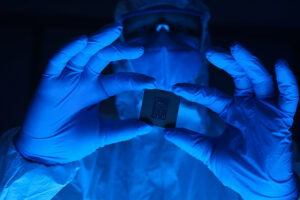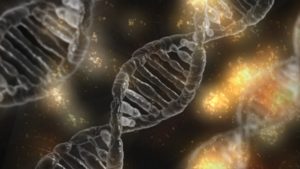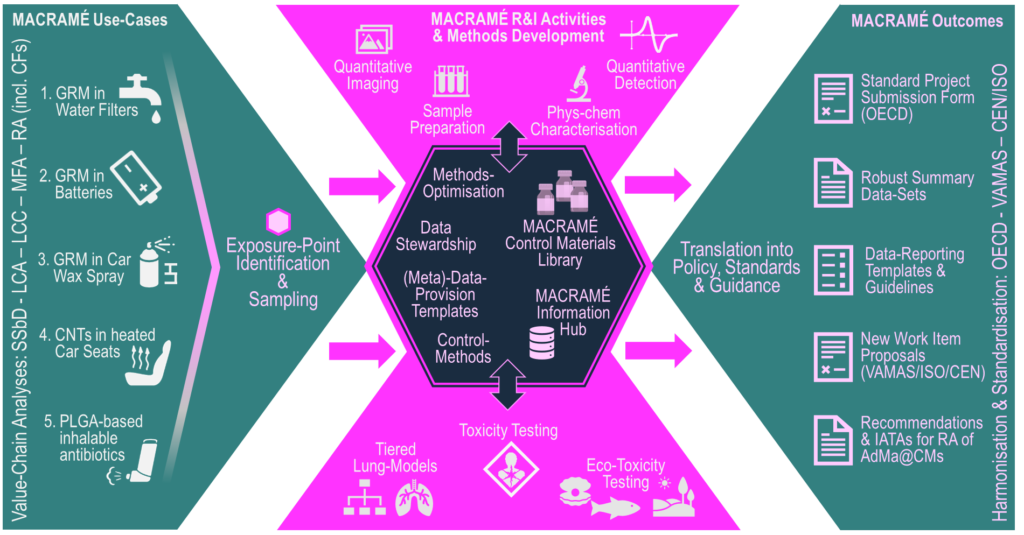NanoFabNet
An international hub for sustainable industrial-scale nanofabrication
NanoFabNet is an international hub for sustainable nanofabrication whose structure, business model, detailed strategies and action plans are designed, agreed and carried by its partners. NanoFabNet’s upcoming virtual collaboration space, NanoFabNet Hub, will be a self-sustained platform that aids international stakeholders in accessing expert knowledge about ethical, safe, and sustainable nanofabrication.
The NanoFabNet Hub will be the product of two years’ collaborative work efforts from several European and international partners. It will be the virtual platform that will be hosted on NanoFabNet’s website and serve as an important tool for nanotechnology professionals and entities.
The NanoFabNet Hub stands for:
- a well-implemented, guided approach to high levels of safety and sustainability,
- trusted technical reliability and quality, and
- compliance with and drive of harmonisation, standardisation, and regulation requirements, amongst all of its members and along their nanofabrication value chains.
The hub will contain an open structure, whose elements have been developed, agreed and validated in a stakeholder-driven approach. A registered NanoFabNet secretariat at its centre will provide an accountable, approachable executive that secures its economic sustainability.
The NanoFabNet Hub is now a one-stop-shop for all matters and concerns pertaining to sustainable nanofabrication and its successful incorporation into the complex, large-scale high-value industries by bringing together governmental and academic laboratories with large industries and SMEs, and thereby offering a coordination space for past, current and future collaborative nanofabrication projects (incl. both EU-funded projects and initiatives, as well as public-to-public partnerships (P2Ps) and public-private-partnerships (PPPs)).is now

It will be responsible for the implementation of a long-term business plan and the provision of validation services, trainings and consultations, while collaborative and cooperative activities between actors of the wider international nanofabrication community, will be fostered within the open architecture of the hub and may be supported by membership organisation, if necessary.
The official online launch of the NanoFabNet Hub will occured in 2022.
Follow this link to find out more on the NanoFabNet website.
Gov4Nano
Implementation of Risk Governance: meeting the needs of nanotechnology
The Gov4Nano project will develop the first implementation of a future-proof operational Nano Risk Governance Model (NRGM) that addresses the needs of the transdisciplinary field and innovative (and key enabling) character of nanotechnology.
- It will explore the potential added value of upcoming tools and approaches such as Findable, Accessible Interoperable and Re-usable (FAIR) databases, data-hackathons, blockchain technology and implementation of Safe-by-Design to achieve adaptive and resilient risk governance.
- It will support consensus building, prioritization and harmonization of practices amongst stakeholders, with a focus on key aspects for risk governance of nanotechnologies, including risk assessment, risk management, risk perception and risk communication, risk-benefit evaluation, and risk-transfer and the societal desirability of nanotechnology applications.
- It will include knowledge management and data management, efficiently executed through stakeholder involvement.
Gov4Nano will take into account the particulars of different generations of nano-technologies and risk/benefits/public concerns to develop an integrated approach connecting the scientific, regulatory and market layers and the different actors involved from generation of data and knowledge to application in legislation and standards, and propose the basis for efficient and effective risk governance of nanotechnologies. The Gov4Nano project will design and establish a Nanotechnology Risk Governance Council (NRGC), to create a trustworthy and objective international umbrella for the risk governance of nanotechnologies.


The Gov4Nano consortium will work closely with the two other risk governance projects funded under the same NMBP-13-2018 call: RiskGONE and NANORIGO, that are addressing the same goal, to ultimately ensure a sustainable and equitable RGF and RGC developed for nanotechnology in Europe.
Follow this link to find out more on the Gov4Nano website.
Genome Editing in sustainable Agriculture
Genome editing – a set of techniques in which specialised enzymes have been modified – can insert, replace or remove DNA from a genome with a high degree of specificity.
Genome editing, and one of its most discussed techniques the CRISPR/Cas9 system, has received increasing attention in the academic press and the wider media. This advanced form of genetic engineering provides tools at relatively low cost for innovation in biomedicine, agriculture, industrial biotechnology and other sectors relating to the bioeconomy.
The rapidly growing use of genome editing has policy implications and human health and environmental safety considerations.
On the 28th and 29th June 2018, the the OECD Conference on Genome Editing: Applications in Agriculture – Implications for Health, Environment and Regulation explored the safety and regulatory considerations raised by genome edited products, with the aim to favour a coherent policy approach to facilitate innovation involving genome editing and will bring together policy makers, academia, innovators and other stakeholders involved in the topic.
The conference was organised across three themes:
- applications of genome editing in agriculture – including plant and animal breeding
- risk and safety considerations
- regulatory aspects
Five years later, the Re-Imagine Europa, a think tank based in Brussels, hosted the Global Conference – Sustainability in Agriculture & Food Systems: Innovation, Indicators and Implementation, compared established sustainability concepts, as well as innovations pertaining to new approaches to reach sustainability in agriculture across a range of countries and regions with a view of identifying indicators that can demonstrate the sustainability of a specific system or innovative application. The Conference considered these general indicators and determined the extent to which they can be elaborated in more detail, in order to implement sustainability systems in practice, building on the work developed through previous events and, in particular, Genome Editing Beyond the EU – A Global Conversation, which featured an interesting intervention by prominent geneticist Professor Jennifer Doudna.
Periodic Table of Patents
The Periodic Table is a different take on the usual Periodic Table of Chemical Elements: for each element we refer to patents, which disclose real or potential practical inventions using the elements and their compounds and physical and chemical properties.
This Periodic Table of Patents celebrates the International Year of the Periodic Table (IYPT 2019) and takes the opportunity of bringing the world of the chemical sciences and intellectual property (i.e. patents) together. Sometimes the patent world confirms the conventional knowledge about the use and application of the elements, while at other times, it reveals a completely unexpected picture.
Follow this link to access the interactive Periodic Table of Patents.
NanoSafety Cluster - Regulations & Risk Governance
Working Group G (WG-G) will serve as interface between science and regulations/policymakers. As such, its activities are centred on the use of scientific results to inform the review and/or development of policies and policy-harmonisation efforts, such as standards and (test) guidelines. Moreover, dedicated workshops, seminars and written summaries will transfer regulatory (information) needs back to the scientific community, in order to help develop targeted research roadmaps; if deemed appropriate, this group may also facilitate the scoping and setting of relevant research priorities for the EU and national research agendas.
In this course, The NanoSafety Cluster Working Group G will provide a platform for the objectives and activities of the concluded H2020 project on the ‘Next Generation Tools for Risk Governance of Nanomaterials’ (NMBP-30), the ongoing H2020 projects on ‘Risk Governance of Nanotechnology’ (NMBP-13), Nanoinformatics (NMBP-14) and ‘In Support of documentary Standards’ (NMBP-34), and the H2020 project on ‘Integrating Activities for Starting Communities’ (INFRAIA-02).
Core Team
- Chair: Steffi Friedrichs (AcumenIST (BE))
- Co-Chair: Keld Alstrup Jensen (NRCWE (DK), representing caLIBRAte)
- Co-Chair: Monique Groenewold (RIVM (NL), representing Gov4Nano)
- Co-Chair: Thomas Kuhlbusch (BauA (DE), representing NanoHarmony)
- Tom van Teunenbroeck (MinIenW (NL))
- Maria Dusinska (NILU (NO), representing RiskGONE)
- Janeck Scott-Fordsmand (Aarhus Univeristy (DK), representing NanoRIGO)
- Mar Gonzalez (OECD, representing NANOMET)
- Miguel Banares (CSIC (ES), representing NanoInformaTIX)
- Antreas Afantitis (NovaMechanics (GR), representing NanoSolveIT)
- Iseult Lynch (University of Birmingham (UK), representing NanoCommons)
Working Group Participation
Representatives from governmental knowledge and research institutes and agencies involved in regulatory science and risk analysis (chemical) regulations.
Want to be involved: subscribe to the NSC-WG-G mailing list, or contact Steffi Friedrichs at AcumenIST.
IANUS - Inspiring & Anchoring Trust in Science, Research & Innovation
The IANUS project strengthens warranted trust in science by fostering participation in research as a co-creative and inclusive process, sensitive to societal values, concerns and needs. Trust must be inspired by transparency and trustworthiness of knowledge production, and anchored by actively involving and serving society, as part of the modus operandi of science. Our core objectives:
- Enable citizens and stakeholders to distinguish valid from unfounded trust;
- Enable them to deal with the uncertainties and epistemic pluralism inherent in scientific knowledge;
- Enable researchers to foster trust through radical methodological change, making research inclusive, transparent and responsive to societal needs and concerns, lowering barriers between research and society; and
- Enable researchers to conduct relevant, engaged and value-driven research while foregoing partiality, ideological biases and conflicts of interests.
The acronym IANUS refers to the deity Janus of gateways (ianus in Latin), looking both at the inside and at the outside of the knowledge production process. Trust in science is never a given. Robust trust is well-placed, reciprocal and informed. Building on insights and results from other projects funded under Framework Programmes, IANUS will
- map the landscape of projects and discourses relevant for trust in science;
- develop its conceptual framework;
- conduct participatory research into conditions of trust in science;
- initiate concrete actions for strengthening trust through co-creation and engagement;
- provide policy recommendation to key stakeholders in science and society (e.g. funding bodies, universities, research teams, educators, media); and
- create platforms for interaction and engagement between scientists and societal stakeholders to foster trust.
The complexity and urgency of societal challenges has rapidly intensified, and trust in science determined our ability to address these challenges effectively.
MACRAMÉ – Advanced Characterisation Methodologies to assess and predict the Health and Environmental Risks of Advanced Materials
The MACRAMÉ R&I Approach (Figure 1) aims to widen the development of harmonised test guidelines (TGs) and guidance documents (GDs) (OECD) and standards (CEN, ISO) to market-relevant AdMas in their complex product matrices.
Illustration of the MACRAME R&I Approach.
This will be achieved by defining the R&I Strategy through life-cycle assessment for five market-relevant industrial MACRAMÉ Use-Cases. These define the selection of the MACRAMÉ R&I Activities and development of MACRAMÉ Methods, and the benchmarks chosen for monitoring the progress R&I. MACRAMÉ R&I Activities include a range of novel sample preparation techniques and ambitious quantitative detection and imaging methodologies that support reliable and reproducible determination of AdMas in different complex matrices (AdMa@CMs) and using inhalation as their main exposure route. By applying, combining and evaluating both established and novel inhalation toxicity tests a tiered approach to toxicity testing will be developed that will provide data on state-of-the-art characterised control materials for the MACRAMÉ Control Material Library. The library will serve future AdMa toxicological research. The ultimate MACRAMÉ Outcomes are proposals for harmonisation and (pre-)standardisation projects to be provided to and further elaborated with the relevant bodies, (i.e. OECD, VAMAS/CEN/ISO).
The resulting efficiency and effectiveness of MACRAMÉ Methods will be demonstrated through their application in Use-Case evaluations, using LCA-, LCC- and ‘Safe & Sustainable by Design’ (SSbD)-based (EWARN (2022)), highlighting benefits like reduced costs of regulatory compliance, by following a MACRAMÉ Safety & Sustainability Matrix. This matrix will be a modular building block for MACRAMÉ’s information-transferring interfaces for different scientific and regulatory communities, and thus provide a stepping-stone for Europe’s route towards a ‘one substance – one assessment’ approach (European Green Deal (2019)) and promote an open strategic autonomy (ETUI (2021)) through key enabling and emerging technologies, including digital ones.
MACRAMÉ’s Central Objective is to:
- detect, characterise and quantify AdMas during handling and processing along the product life-cycle,
- assess potential impacts on (human) health and the environment in intended or unintended exposure situations (i.e. ‘Exposure Points’) in the product value-chain,
- advance the wide-spread applicability of the developed test and characterisation methods, by demonstrating their effectiveness and efficiency in the context of existing, market-relevant industrial AdMas containing products, and
- prepare and initiate standardisation, harmonisation and technological & regulatory validation of test- and characterisation-methods.
BIO-SUSHY – Sustainable Surface Protection by glass-like Hybrid & Biomaterials Coatings
The BIO-SUSHY Project addresses the challenges associated with the widespread use of per- and polyfluorinated alkyl substances (PFAS) in coatings. These substances have high stability and water and oil-repellent properties, but they are also polluting and toxic to humans and the environment. The BIO-SUSHY project aims to develop a sustainable and safe alternative.
BIO-SUSHY targets to develop three PFAS-free novel coatings, which will be validated in applications in the textile, food, and cosmetic packaging industries.
Project Objectives:
- Developing innovative coating solutions for a safe environment,
- Creating durable water & oil repellent coatings,
- Providing a safe and sustainable by design manufacturing approach,
and - Targeting the textile, food packaging, and cosmetic markets.






























